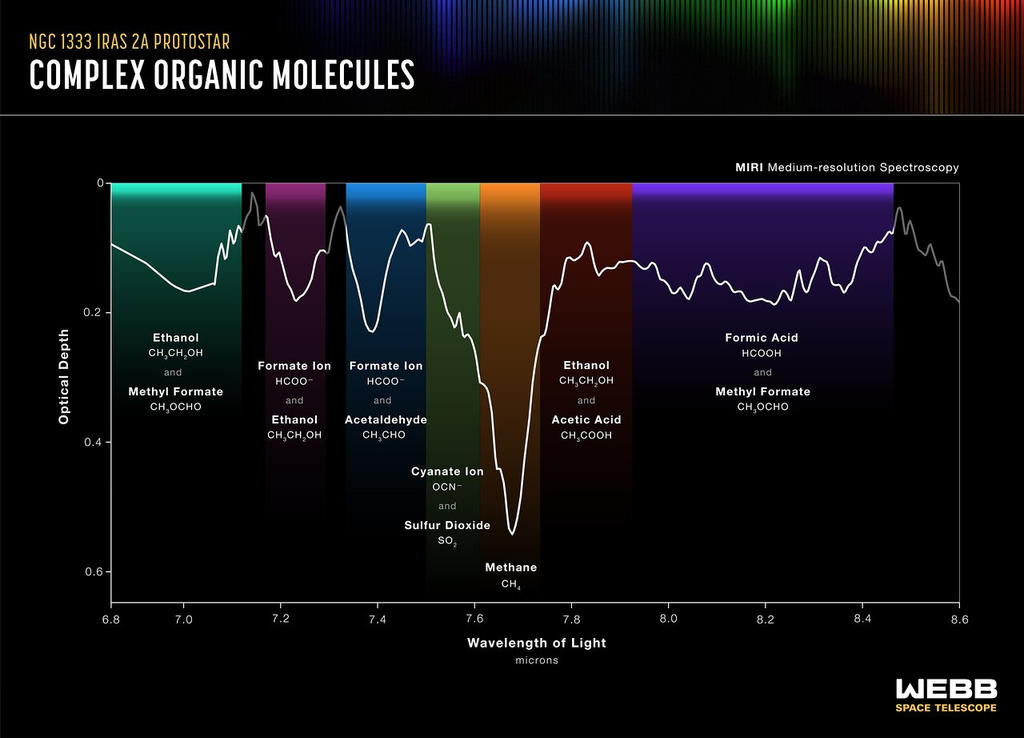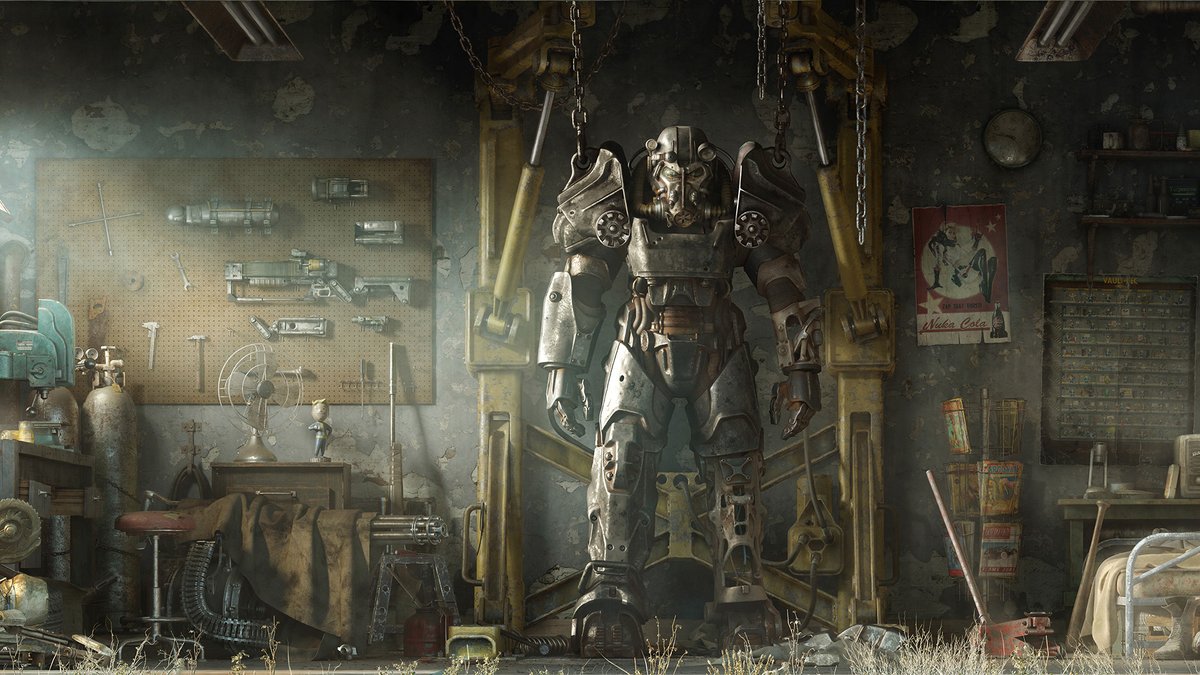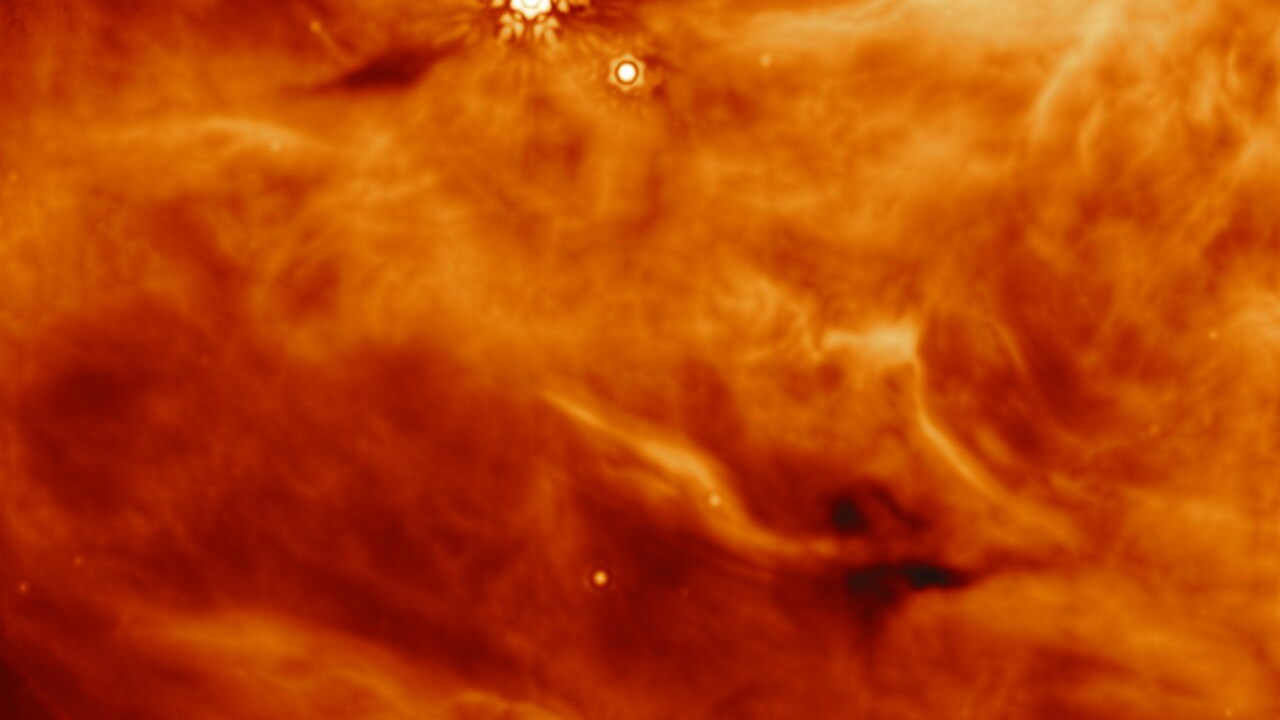More compounds necessary for life to arise have been found in space. Using the James Webb Telescope, researchers led by Will Roscha of Leiden University detected particles of varying degrees of complexity in the gas and dust around the protostars IRAS 23385 and IRAS 2A.
The existence of solid complex organic molecules (or COMs) in protostars has already been predicted, but only in laboratory experiments; In space, they have been observed in a hot, gaseous state around stars. Now, observations from James Webb's MIRI instrument have revealed and confirmed the occurrence of frozen COMs.
According to the authors, molecules of acetaldehyde, ethanol (alcohol), formic acid (which makes ant bites painful), and possibly acetic acid (acetic acid) were detected in the solid state in a very powerful way. “The discovery of frozen COMs suggests that solid-state chemical reactions on the surfaces of cold dust grains can build complex types of molecules,” Rocha said.
In fact, the material around the protostar IRAS 2A is very promising for future studies. The star appears to have some properties similar to those that existed in the Sun when our star was in its “infancy,” more than 4.6 billion years ago. This means that the icy compounds surrounding it may have been around when the solar system was forming, and ended up on Earth.

The discovery of sulfur dioxide could be very useful for understanding how habitable planets are born around stars. According to the team, this compound and other sulfur-containing compounds play an important role in the metabolic reactions that drove primitive life forms on our planet.
All of these molecules could become part of comets, asteroids, and new planetary systems, when frozen material is transported into disks formed by planets as the star system evolves, notes Eoin van Dischhoek, co-author of the new study. “We hope to follow this astrochemical path step by step with more data from Webb in the coming years,” he concluded.
The article was published with the results of the study in the magazine Astronomy and astrophysics.
source: Astronomy and astrophysics; via: European Space Agency

“Incurable thinker. Food aficionado. Subtly charming alcohol scholar. Pop culture advocate.”







More Stories
Fallout 4 receives update on PS5 with graphics options; Patch notes
Sony reveals more games leaving PS Plus Extra in May
3 simple tricks to change the color of your WhatsApp